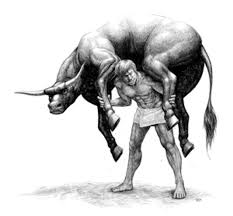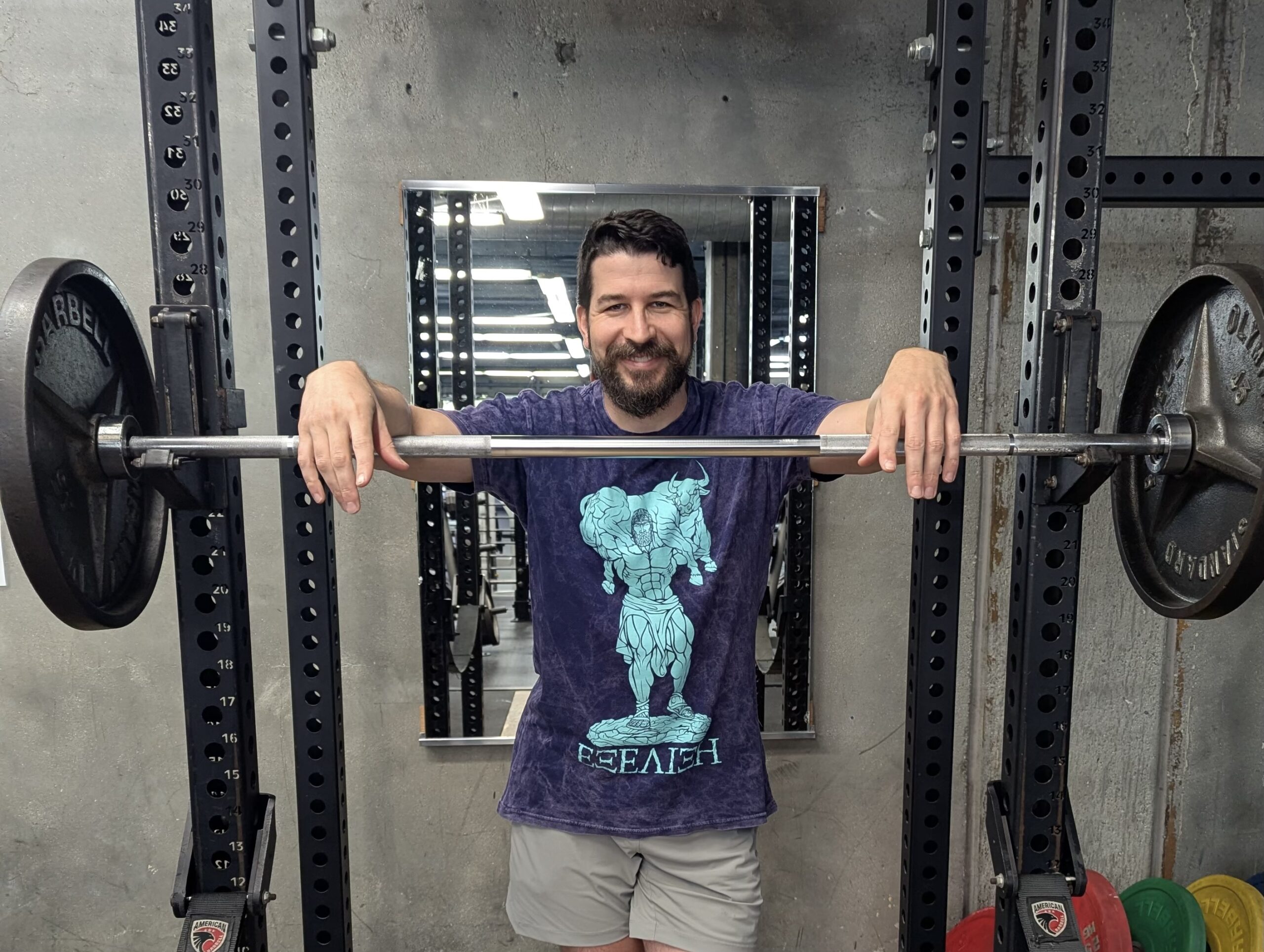Have you ever heard of the famed Greek wrestler Milo of Croton? It is said that he was the greatest wrestler and strongest man in all of history. He competed in and won the 60th olympic games as a boy in the boy’s division and then won five more Olympics competing as an adult in the 62-66th games (Wikipedia 1). That’s 28 years as Greece’s top wrestler (not sure what happened at the 61st games), a pretty impressive feat. He was also a contemporary and follower of Pythagoras as in the Pythagorean theorem, this isn’t relevant to our discussion I just think it’s cool. I won’t elaborate on all of his feats of strength and the legends surrounding him, you can read the Wiki for that, particularly the way he died. However there is one part of his story that is relevant to training even today and that is the story of Milo and the Bull.
So how did Milo become so strong in a time when they had no barbells, no Kaiser machine, not even an elliptical? Well naturally, he carried a full grown bull on his back. Simple.

Ok, ok he didn’t simply carry a full grown bull on his back.
He started when it was a newborn calf.
Every day he would go out to his farm, feed the calf, put it on his back and walk around his farm. So as the calf got bigger, Milo got stronger and as the story goes this “training regimen” culminated with him carrying the now full grown bull on his back across the Olympic Stadium where he then would cook and eat the animal. Not a very nice way to treat your training partner in my opinion.
The story of Milo of Croton gives us the first documented example of progressive overload, probably the most fundamental of all training principles. So what is progressive overload? Well, very simply, it’s “increasing some training parameters over time” (Jeff Nippard). Let’s talk about the four main parameters we can apply this to. Milo’s story illustrates the most obvious choice; we can slowly increase how much weight we are lifting for any particular exercise, i.e. add more weight to the bar. Alternatively, we can increase the number of reps we do with a given weight, if we were doing five reps now maybe we do eight. We can increase the number of sets: week one of our program maybe we were doing two sets, on week three we start doing three sets. Finally, we increase the number of times a week we are exposed to a particular exercise or how often we workout as a whole. If we were working out twice a week and increased to three times a week, congratulations we have progressed our overload. There are a few other smaller ways that you can affect overload such as using a varied tempo to your reps or overloading the negative, but these are small levers to pull with relatively small outcomes.
So why can’t I just do the same workout at the same level, with the same weights I always do? Well you can but you will only get as strong or as fit as necessary to accomplish that task. Once you’ve adapted to the stress of walking a mile, that’s it. No more adaptation for you.
But wait, does that mean I have to add weight every workout? No, of course not and also you shouldn’t. There are limits both to how quickly you can recover and adapt to the new workout and there is an absolute limit to how strong, fit, adapted you can become. There is also obviously a limit to how many hours and days you have available to exercise.
Should I always be loading as much as I can on the bar or pushing the intensity on the assault bikes to the max? Again no, probably not. But at least some of your sets or even just the last few reps should be challenging. You should have to push hard. Not a 10/10 effort but maybe an 8/10.
What if I don’t care about getting huge and strong like Milo? Perfectly fine, if you’re happy with where you are, then keep doing what you’re doing. But if there’s a goal you’re striving for and nothing’s changed for a while, maybe try adjusting some of the parameters that we’ve discussed.
Keep in mind, progressive overload doesn’t only impact the size and strength of your muscles. It affects your entire system. All those health benefits of exercise we’ve all been reading about are directly related to this principle: our bodies adapt. When we lift heavy things regularly, our muscles adapt by growing strong enough to lift those things. Our tendons and ligaments become more robust, making us less likely to tear an ACL on the tennis court. At the same time, our stronger muscles pull harder on the bones they’re attached to, so our bones adapt by becoming stronger as well. This is why weightlifting increases bone density, helping prevent or mitigate osteoporosis. When we run or bike regularly, we’re not just overloading our legs. We’re asking more of our lungs and heart. These systems also adapt, which is why regular exercise is so important for cardiovascular health.
Interestingly, the modern methodology and term “progressive overload” was developed by Thomas Delorme, M.D. while he was rehabilitating World War II soldiers. He was an avid weightlifter who knew the benefits of exercise first hand, but in the 1940’s, accepted medical wisdom held that physical exertion of any sort should be avoided while patients were recovering from injury. The breakthrough came when he started working with Thaddeus Kawalek, a soldier that had been dealing with a knee injury. Kawalek was also a fellow gym bro and so was willing to try Dr. Delorme’s novel approach of using weight training in a progressive manner as part of his treatment. As a result, Kawalek recovered much faster than other patients with similar injuries (Wikipedia 2).
So there you go, the prime principle that explains why we, your trainers, are always bugging you to add more weight, run a little further, one more rep! One more rep!! See! It’s not just sadism, it’s scientifically supported sadism.
Also, seriously, go read about how Milo of Croton died.
Links
Wikipedia:
Jeff Nippard How To Build Muscle (Explained In 5 Levels)



Leave A Comment